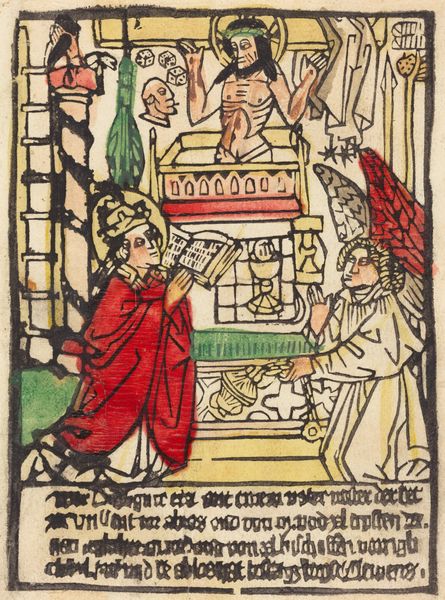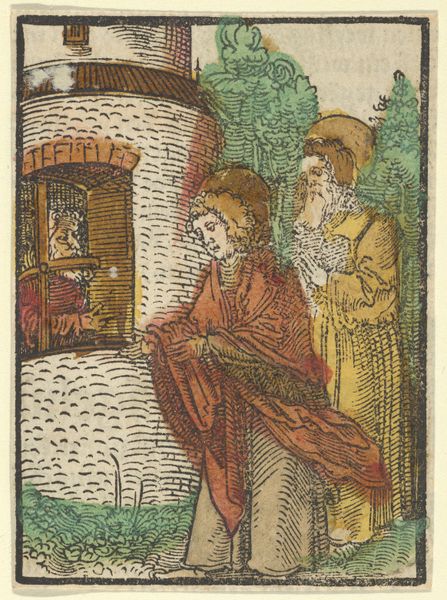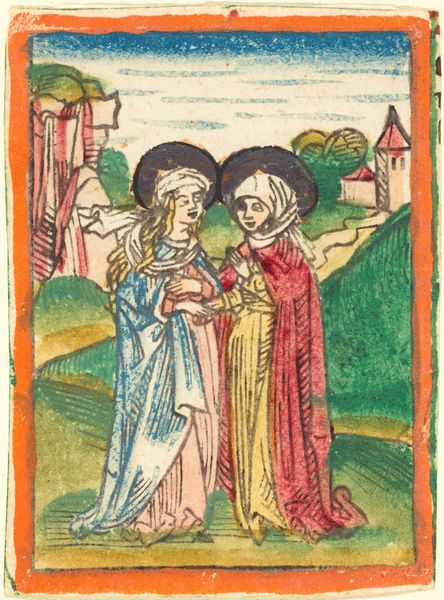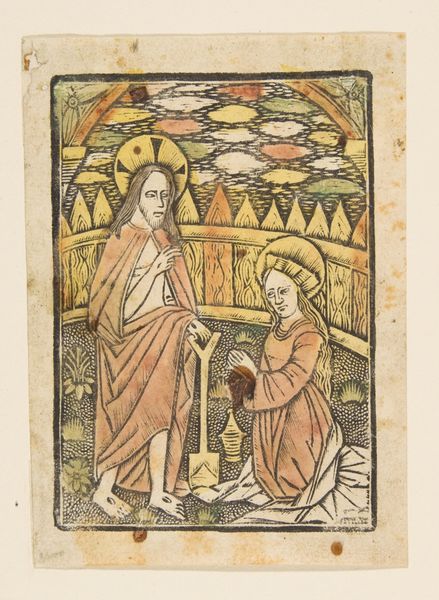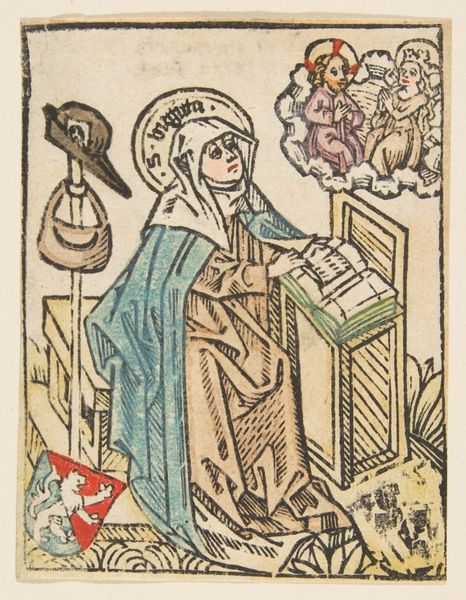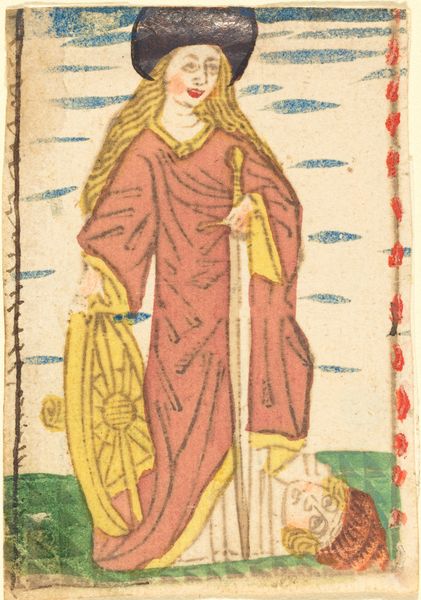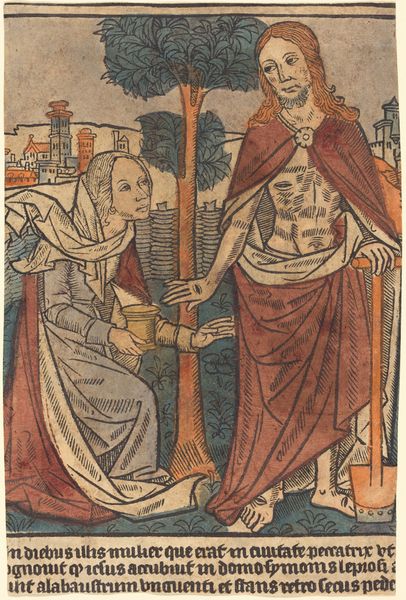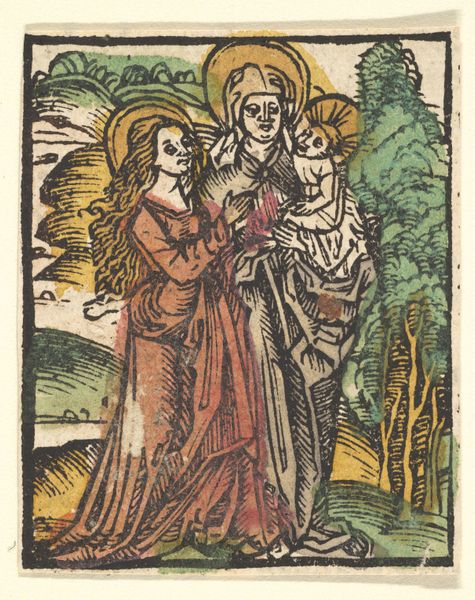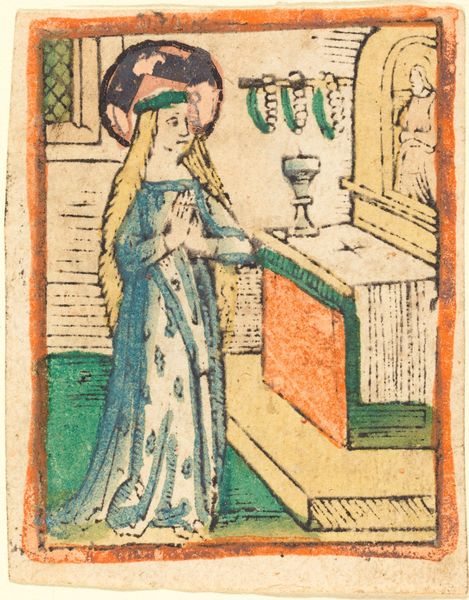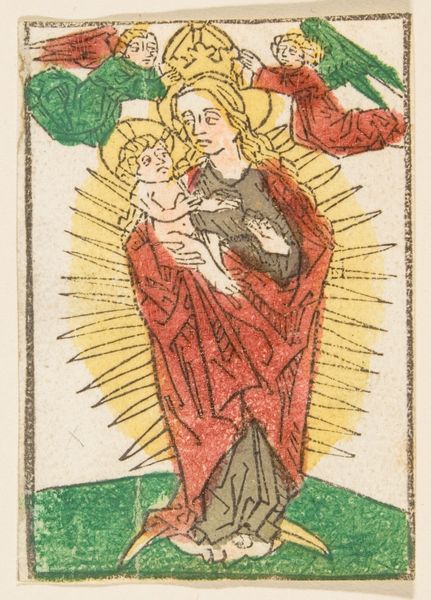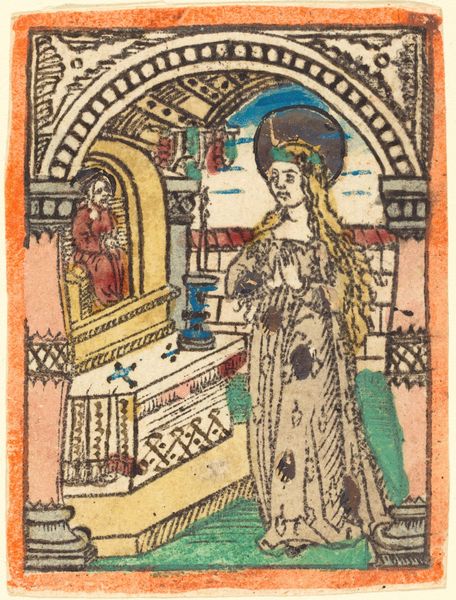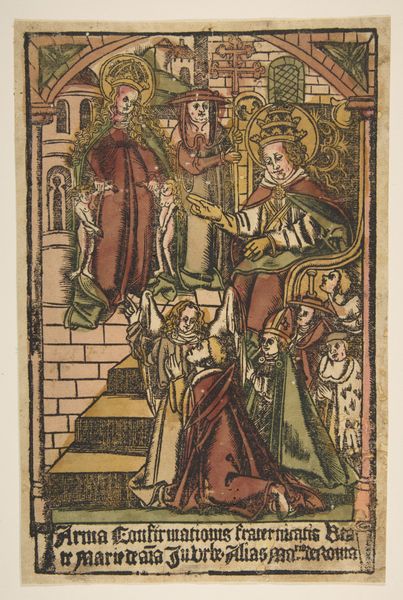
drawing, print, woodcut
#
drawing
#
medieval
# print
#
gothic
#
figuration
#
woodcut
#
history-painting
#
northern-renaissance
Dimensions: 7-11/16 x 4-3/4 in.; 8-3/8 x 5-9/16 in.
Copyright: Public Domain
Editor: Wow, there's something really raw about this. It's got that unfinished, sketch-like feeling that kind of draws you right into the heart of the scene. It's got real immediacy. Curator: That's quite perceptive. We're looking at a print, a woodcut to be exact, called "The Annunciation," which likely dates between 1450 and 1500. Though the artist’s identity remains unknown, its current home is in the Metropolitan Museum of Art. The scene captures the moment the Angel Gabriel informs Mary that she will conceive and bear the son of God. Editor: You know, it's funny. Even though the colours are so simple—red, green, yellows—it almost adds to that intensity. It feels more emotionally charged, stripping the story back to its basic power, rather than just depicting grandeur. I am really captured by its rawness. What kind of statement does this artwork makes regarding female religious representation? Curator: Well, it's fascinating that you ask that question. When looking at the history of this representation through different works, we notice how much it evolved. Here we see a rather human portrayal. The architecture provides a framework of societal structures, against which Mary navigates an unheard-of path. This juxtaposition gives room to challenge how sacred female roles are conceived, especially in terms of piety and personal autonomy. The artist places her in this in-between-zone, this interesting spot between human reality and a more theological framework. Editor: Makes me wonder about all the stories held in museums... the known and the unknown voices that shape these narratives. So, if this little woodcut could talk, what tale do you think it'd spin about art, about the society it was meant for, and about our current culture and history that it lives in now? Curator: It would tell us about faith, craft, and perhaps the radical notion of re-imagining long-standing traditions. As a piece that has moved through centuries, it now exists as a meeting point of temporal realities. Editor: Beautifully said. It feels special to share space and time with it here, now.
Comments
No comments
Be the first to comment and join the conversation on the ultimate creative platform.
